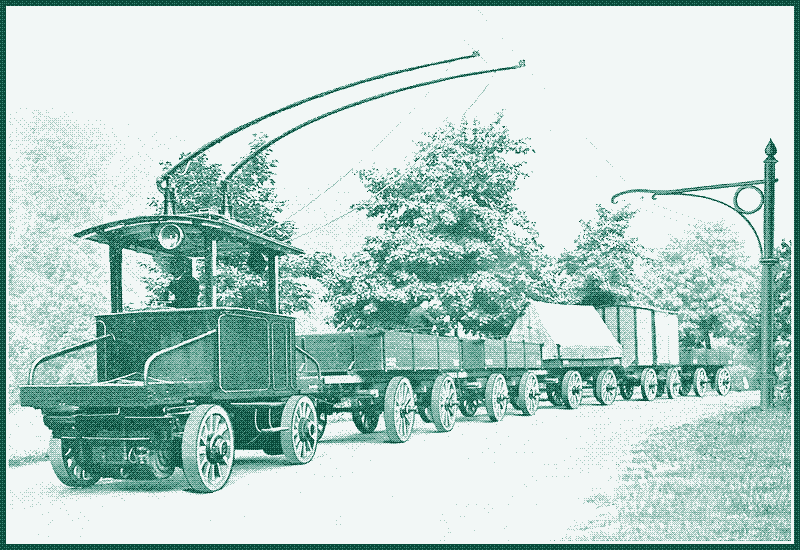
Hafenschleppbahn in Altona (1912-1950)
The most successful (and most remarkable) trolleytruck network designed and constructed by Schiemann was the “Hafenschleppbahn” in Altona, today an area in Hamburg. The road from the port to the town was so steep that horses had severe difficulty climbing it. Trolleytruck technology came to the rescue, but the electric trucks on the one kilometre long track (up and down) did not replace the horses. The trucks were used as an assisting power source. The trolleytruck pushed or pulled one or more horse carts, while other wagons (handcarts included) were also attached to the convoy. (The guy on the bike is not.)
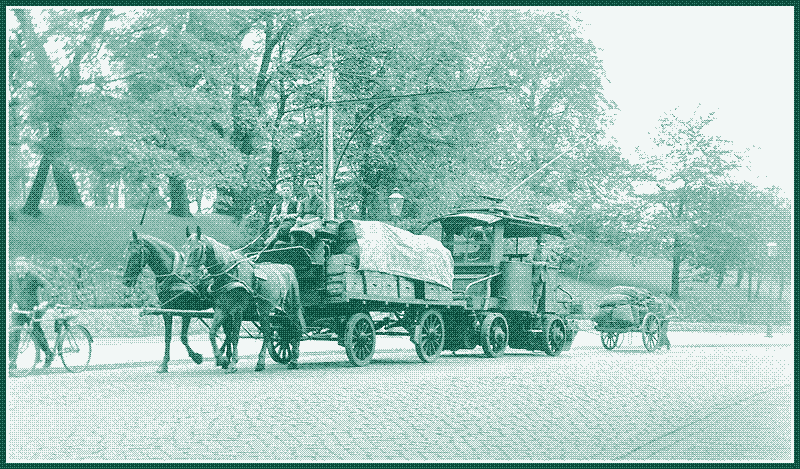
This hybrid system combining electricity with animal and human power started operation in 1912 and remained in service until 1950. Each day, around 200 wagons were pulled or pushed up the hill, each convoy transporting 5 to 7 tonnes of cargo. In the first ten months, the road trains took more than 22,000 wagons up the hill. Total electricity consumption during that period was 30,878 kilowatt-hours. That’s 234 watt-hours per ton of cargo.
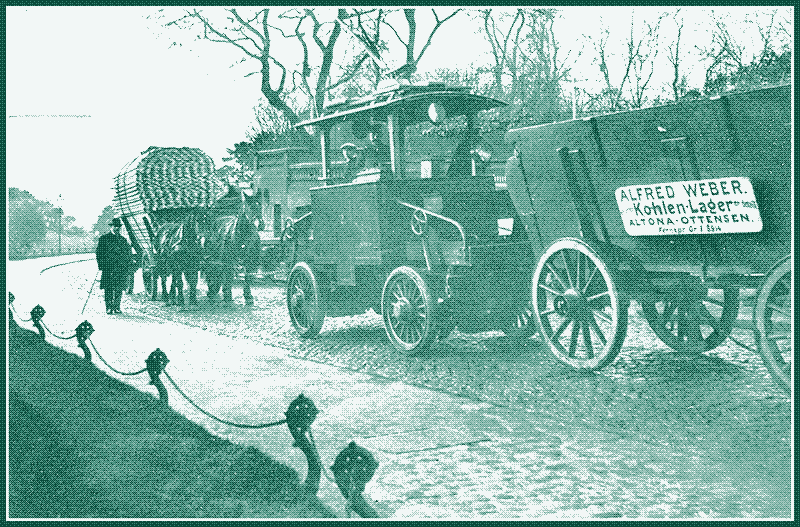
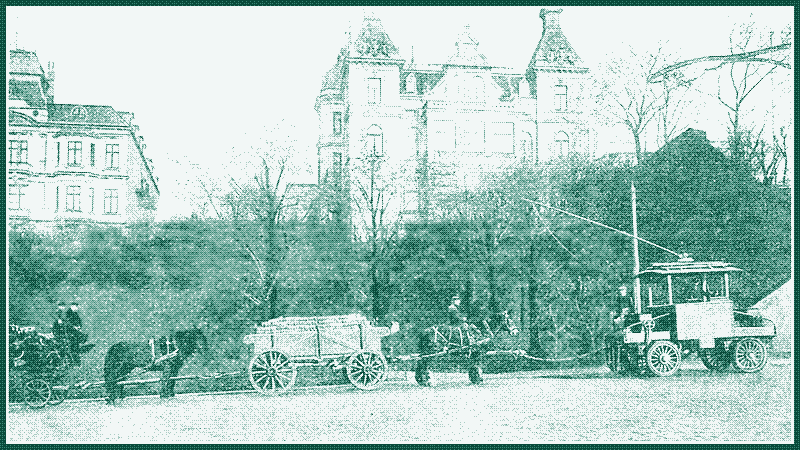
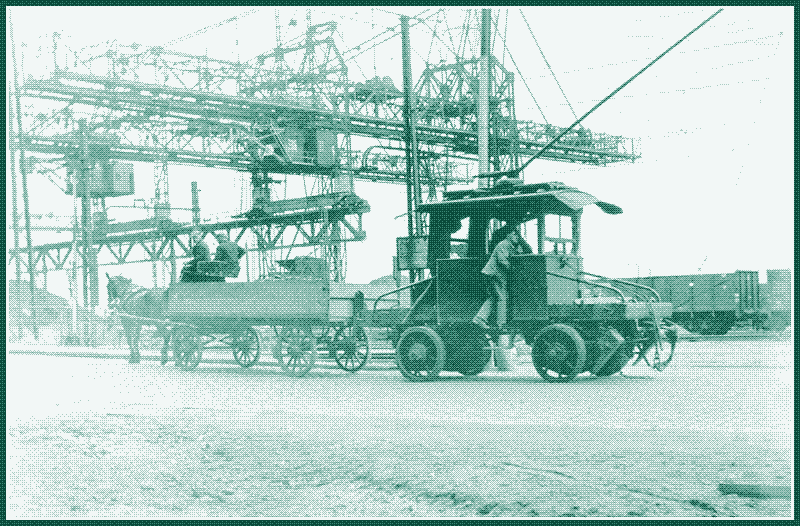
The maximum speed of the trolleytrucks was 10 kilometres per hour while climbing the hill and 30 kilometres per hour on flat terrain. The average speed of the convoy was 5 to 8 kilometres per hour and the trip up the hill took 8 minutes, coupling and uncoupling included. In total six trucks were used, several of them at the same time (two trucks crossing posed no problem since the one coming down was not connected to the overhead line). Fees were collected during the trip. The service was initially exploited by the “Gesellschaft für gleislose Bahnen Max Schiemann & Co.”, from 1922 it was run by the town of Altona, and later by the city of Hamburg.
Bielatal Bahn (1901-1904) & Industriebahn Wurzen (1905-1928)
The first system built by Schiemann and his “Geselschaft für gleislose Bahnen Max Schiemann & Co.” was the “Bielatalbahn”, a 2.8 kilometre long track in Sachsen. It carried both passengers and cargo (mainly for a paper factory). The track operated only from 1901 to 1904, but the infrastructure was reused to build (part of) a new line close to Leipzig: the “Industriebahn Wurzen”, an exclusive cargo line which was in operation from 1905 until 1928.
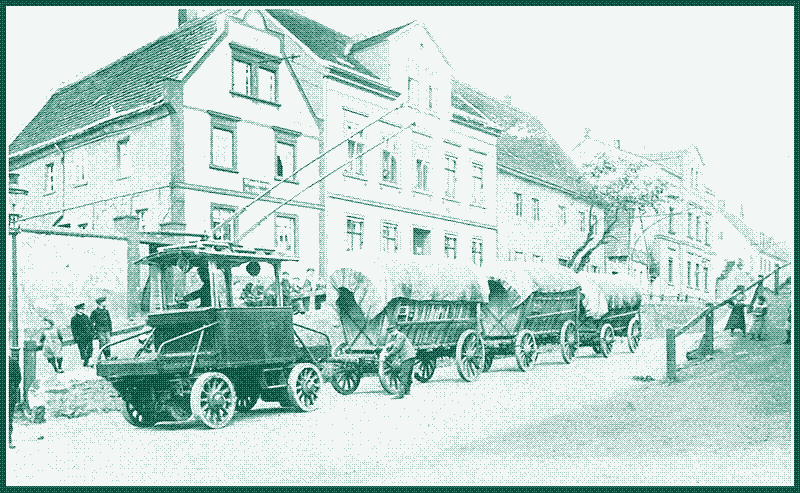
It was 3.46 kilometres long (4.23 kilometres up to 1914, when an extra track was in use). The cargo system consisted of 2 trolleytrucks, 10 wagons for coal transport (each with a capacity of 6 tons) and 27 wagons for flour transport (each with a capacity of 5 tons). Each truck had a power output of 25 HP and could pull a maximum of 3 wagons with a total weight of 15 tonnes. The speed of the road train was 6 kilometres per hour when loaded and 8 kilometres per hour when unloaded. The trolleytrucks were initially equipped with wood and iron wheels with spokes, only later to be replaced by rubber tyres. The same trucks were used for the full 23 years, accidents did not occur.
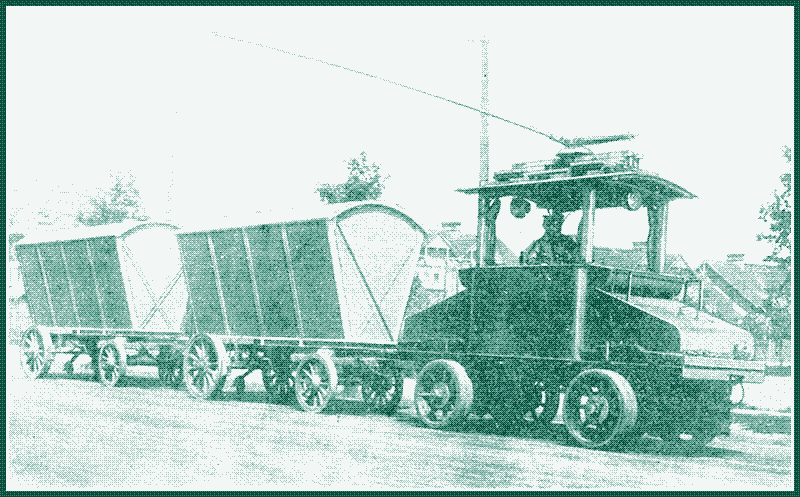
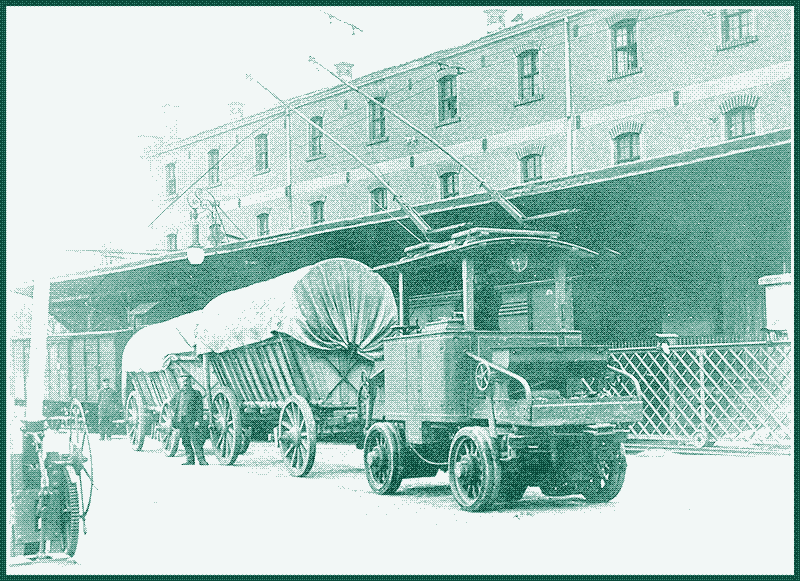
The line was constructed to transport flour from a flour mill to the cargo train station. An extra track carried coal from a mine to the station, but was closed when the mine shut down in 1914. On average, 300 tons of cargo was transported each day. Planned extensions to a wallpaper factory and a felt factory were never realised. Since the production facilities of Schiemann were located in the same town, the track was also used to test vehicles and convoys for other lines. Allegedly, the owner of the flour mill also had a small private passenger vehicle for use on the line.
Kalkbahn Grevenbrücker (1903-1907)
The first trolleyline built exclusively for cargo (the “Kalkbahn”) was installed in Grevenbrück, a village in the present-day municipality of Lennestadt in Nordrhein-Westfalen. The 1.5 kilometre trajectory served to transport limestone from a quarry (opened in 1902) to the train station. The route went straight through the town and crossed an old bridge. The line opened in 1903 and was closed in 1907, when the quarry was relocated. The service was operated by the mining company itself, the “Grevenbrücker Kalkwerke”.
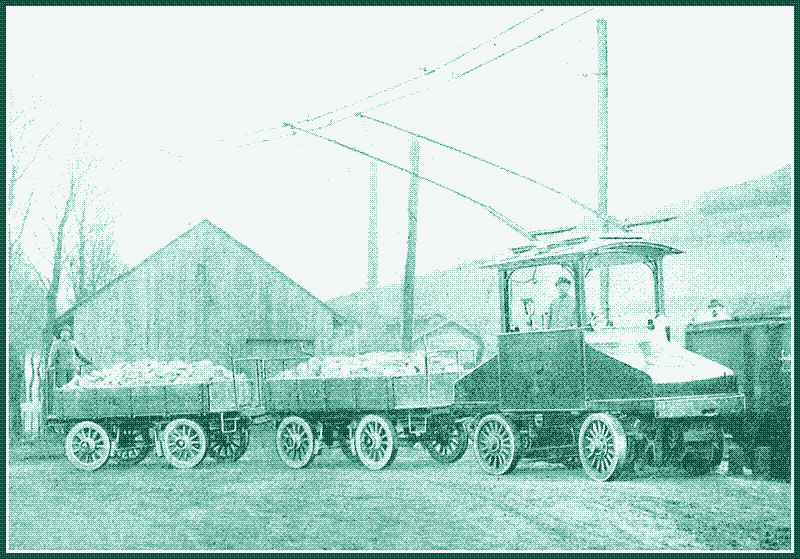
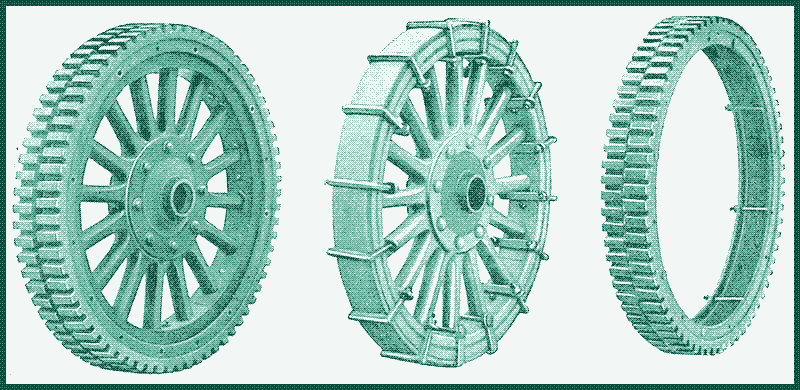
About 20 convoys passed each day, at a speed of 6 kilometres per hour (loaded) or 7 to 8 kilometres an hour (unloaded). The trucks could pull 3 to 4 wagons (each with a capacity of 5 to 6 tonnes) in good weather conditions, and 2 wagons when there was ice or snow. In winter, the trolleytrucks were equipped with snow tyres. For the same reason, the wagons on the first Schiemann system (the Bielatalbahn described above) were equipped with skates. The trolleytruck was also used to pull a rolling mill for road building. The “Kalkbahn” was built in just 3 months. Financial savings were about 33 percent compared to the same trajectory by horse cart.
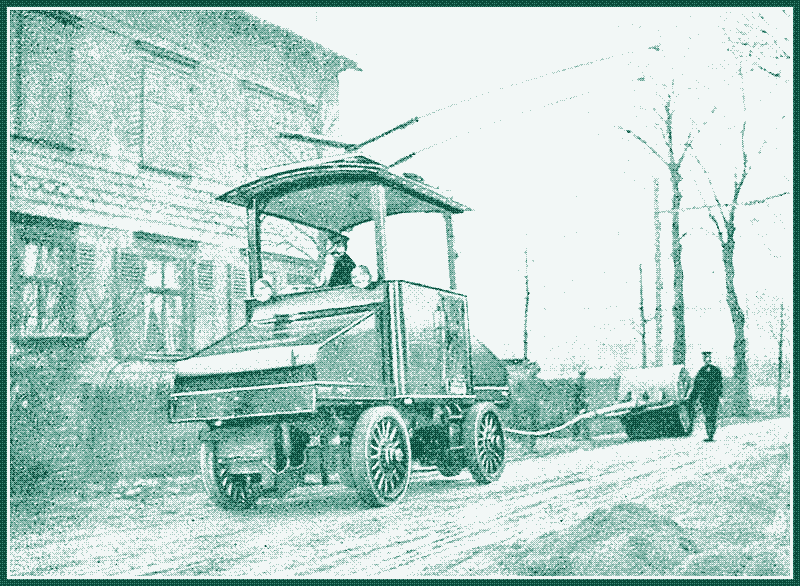
The town of Grevenbüch had a second line, the “Veischedetal Bahn”, which was in operation from 1904 to 1916. Until 1907 it transported both passengers and goods (mainly tobacco to some cigar factories), after that date it carried only passengers and mail. The route was 8 kilometres long and the vehicles attained a speed of 18 km/h. Both trolley lines came together at the train station, but they were not interconnected.
Other Schiemann trolley lines
Max Schieman built 12 lines in total: several passenger trolley lines as well as some more routes that were used to transport both passengers and cargo. The “Gleislose Bahn Blankenese-Marienhöhe” had a length of 3 kilometres and carried passengers between the train station and the town. It was in operation from 1911 to 1915. The passenger line “Gleislose Bahn Ahrweiler” was in operation from 1906 to 1917 and had a length of 5.5 kilometres.
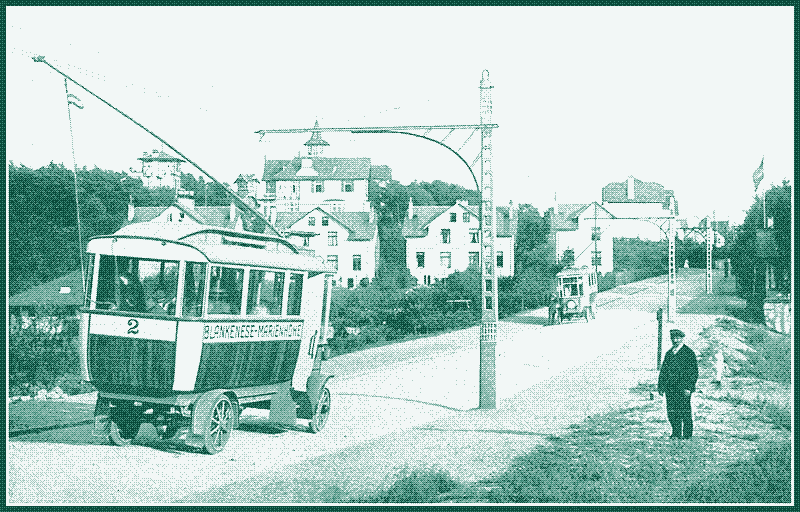
The 4.5 kilometres long “Gleislose Bahn Monheim-Langenfeld” transported both goods (5,000 tonnes per year), passengers and mail. It was in operation from 1904 to 1908 and was the only line that was discontinued because of technical problems - the trucks were too heavy and damaged the road.
Contemporaries of Schiemann, building or experimenting with trolleytruck systems, were Werner von Siemens, Lombard Und Guérin (France), Carl Stoll, Charles Nithard (France), E.Cantono (Italy), Hans-Ludwig Stoll and Lloyd-Köhler. World War I slowed down the further development of trolley systems, and it was only in the 1930s that the technology really took off. Only for passengers, though, since cargo systems never became widespread. Trolleytrucks (and trolleybuses) would make a lot of sense these days.